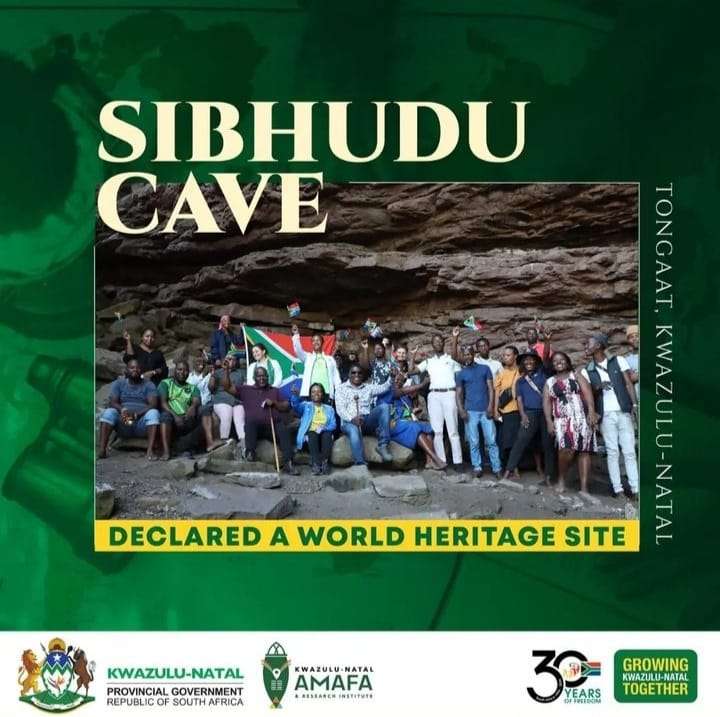From February 27th to March 28th, 2024, the University of Tübingen conducted its fourteenth fieldwork campaign at Sibhudu Cave, KwaZulu-Natal, South Africa, under the direction of Nicholas Conard. As one of the most significant Middle Stone Age (MSA) sites in South Africa, Sibhudu Cave is essential for establishing a refined regional MSA cultural sequence and discussing the interaction between inhabitants and their environment during this dynamic period. On July 26th, 2024, the site was declared a UNESCO World Heritage Site.
This season continued the ongoing goal of the past twelve years: to establish a complete, high-resolution cultural stratigraphy by extending the sequence of two excavation regions—Deep Sounding (DS) and Eastern Excavation (EE).
In DS, the team continued to dig into the “Lower MSA” layer, named Jacob. Jacob is a sandy silt layer containing highly weathered lithics, charcoal pieces, botanical remains, and almost no faunal remains, partly reflecting the influence of extreme diagenesis. During this year’s excavation, the highly moist sediment posed challenges for screening and hindered further excavation. Considering the dryness of the higher strata, the excessive moisture in the lower sequence seemed unusual. Based on observations over the last two years, the researchers suspect that the deepest deposits have been affected by the movement of water through the sediment column, with moisture traveling downward along the floor and the eastern wall of the rock shelter. This could also explain aspects of the strong diagenesis.
In EE, the excavation continued in new squares F2, F3, G2, and G3, started last year, reaching the “Late/Final MSA” layers: Bilbo, Britt, Christiann, Christine, and Desmond. The excavation focused on establishing a reliable slope for those deposits, all cut by Iron Age features. The matrix of mottled MSA sediments consists of compact silty deposits with white concretions. Numerous ochre pieces, faunal remains, and botanical remains were unearthed. Following the recovery of two hollow-based points (HBPs) last year, at least eight more of these key diagnostic artifacts of the Final MSA (Bader et al. 2022) were found this year in layers Bilbo, Britt, and Christiann. Beginning with Christine and continuing into Desmond, the technology changes significantly. In these layers, HBPs are absent, and there is an increase in the number of clear Tongati tools, which are the most typical artifacts of the “classic” Sibhudan as defined in layer Elvis (BSp) and in the layers underlying Elvis.
In parallel with the fieldwork, around ten people worked in the lab. Viola Schmid and Aurore Val collected data for their research at Sibhudu, while Ph.D. candidate Kong Xiangmei and MSc candidates Kevser Rommel and Viola Fratta collected data for their theses. Crew members also worked in the KZN Museum to improve the storage and curation of the collections from Sibhudu.
